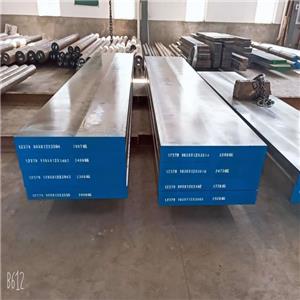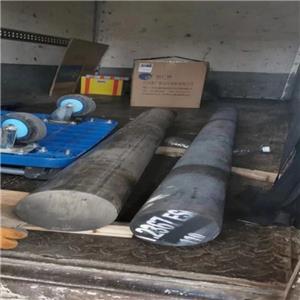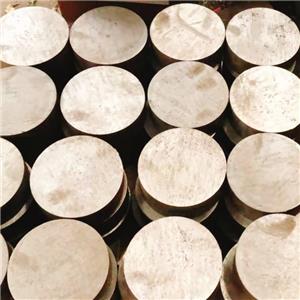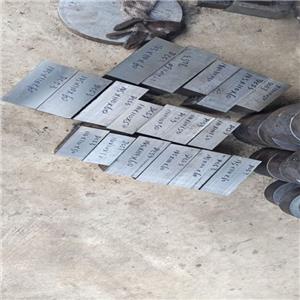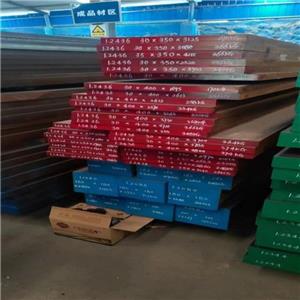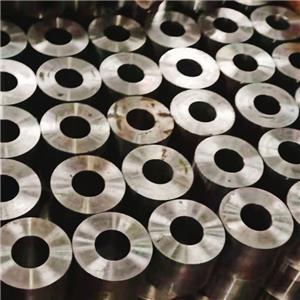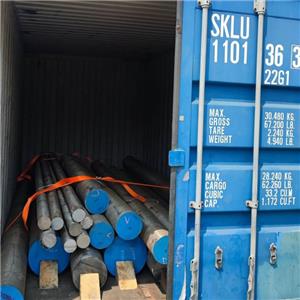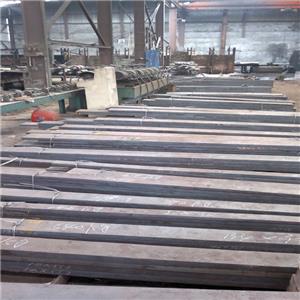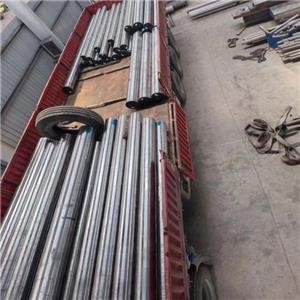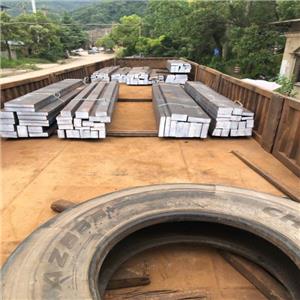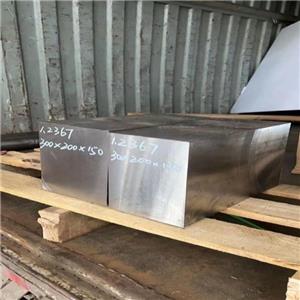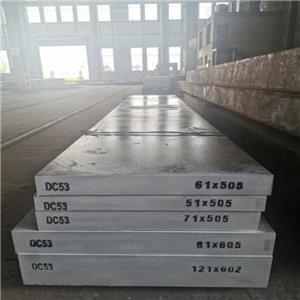special steel
-
Hot
1.2379 machined flats
1.2379 is a tool steel with a carbon content of 1.5%, a chromium content of 11.5%, and a hardness of up to 60HRC after heat treatment. It is a kind of semi-stainless steel. D2 steel has good wear resistance and moderate toughness. The disadvantage is that the corrosion resistance is slightly insufficient. It is a kind of steel that is more suitable for practical use. Bob Dozier likes to use D-2. D2 steel is highly wear-resistant, slightly deformed cold work die steel, wind-hardened tool steel. D2 steel can be used to manufacture cold work die steels with large cross-sections, complex shapes, high impact resistance, and high wear resistance, such as silicon steel sheet die, cold cutting scissors, trimming die, etc.
Email Details -
Hot
1.2367 ESR bars
DIN 1.2367 ESR is a chromium-molybdenum-vanadium alloyed hot work tool steel with high
Email Details
thermal fatigue resistance. It has been refined via ESR process to ensure highest quality standards in terms of grain
size, segregation, micro-cleanliness, and purity. EN DIN 1.2367 features high isotropy, reason for which transversal
resilience is often three times higher when compared to conventional EN DIN 1.2367. Furthermore, the thermal
fatigue resistance is also often much higher than that of conventional hot work tool steel EN DIN 1.2343, enabling
longer die lifetime. -
1.2343 cutting rounds
1.2343 die steel belongs to electroslag remelting hot-work die steel. It has uniform material and superior machinability and polishability, good high toughness and high plasticity, high wear resistance at high and low temperatures, and overall hardening performance.
Email Details -
Hot
DC53 STEEL
In the case of proper heat treatment, the strength and toughness are excellent, and the high temperature tempering hardness can reach 62~63HRC.
Email Details
The toughness of DC53 is more prominent in cold work die steel, and the tools made of DC53 rarely show cracks and cracks, which greatly improves the service life.
The residual stress after wire cutting is tempered at high temperature to reduce the residual stress. Therefore, cracks and deformation after online cutting of large molds and molds that require precision are suppressed. -
1.2436 turned rounds
1.2436 high wear-resistant chromium steel, high carbon, high chromium ledeburite steel, cold work die steel.. Used to make cold work die with large cross-section, complex shape, high impact force and high wear resistance. Cold work molds include cold punching dies, wire drawing dies, drawing dies, stamping dies, thread rolling dies, thread rolling plates, cold heading dies and cold extrusion dies. The cold work die is made of steel, which should have high hardness, strength, wear resistance, sufficient toughness, and high hardenability, hardenability and other process properties according to the working conditions of its manufacture. Alloy tool steels used for this kind of purposes generally belong to high-carbon alloy steels, with a carbon mass fraction above 0.80%. Chromium is an important alloying element of this type of steel, and its mass fraction is usually not more than 5%. However, for some steels with high wear resistance and small deformation after quenching, the highest chromium mass fraction can reach 13%, and in order to form a large amount of carbides, the carbon mass fraction in the steel is also very high, up to 2.0%~ 2.3%. Cold work die steel has a high carbon content, and most of its structure is hypereutectoid steel or ledeburite steel. Commonly used steels include high carbon low alloy steel, high carbon high chromium steel, chromium molybdenum steel, medium carbon chromium tungsten steel, etc.
Email Details -
1.2363 cold work tool steel
A2 steel is an air-quenched die steel with deep air-quenched hardening properties, which is extremely beneficial for complex molds that must maintain their shape after quenching and tempering. The deformation of this steel due to air quenching is only about 1/4 of that of manganese-containing oil-quenched tool steel. The wear resistance is between manganese and high-carbon and high-chromium tool steels. Its toughness is better than any one, especially It is suitable for tools that require good wear resistance and special toughness. It is widely used in blanking dies and forming dies, rolls, punches, calendering dies and thread rolling dies, and also used in some types of scissors blades. . Cold work die steel is A2 steel imported from the United States, and it is the most widely used type of A-type air-quenched steel. It is suitable for cold work die steel that requires both wear resistance and toughness. It can replace CrWMn and 9Mn2V steel to make medium and small cold blanking dies, blanking dies, forming dies and punches.
Email Details -
1.2842 blade steel
1.2842 steel is cold work die steel is easy to forge and requires a hardness of 63HRC.
Email Details
chemical composition
1.2842 chemical composition (mass fraction): C0.85% ~0.95%, Si0.10% ~0.40%, Mn1.90%~2.10%, P≤0.030%, S≤0.030%, Cr0.20% -0.50% , V0.05% ~0.15%.
Reference corresponding grade
Chinese GB standard grade 9Mn2V, international standard ISO grade 90MnV2, German DIN standard grade 90MnV8, German DIN standard material number 1.2842, American ASTM standard grade 02, British BS standard grade B02, Sweden ASSAB (ASSAB) standard grade DF- 20 -
1.2365 milled block
1.2365 die steel is used to manufacture forging dies with high impact load, hot extrusion dies, precision forging dies; die-casting dies for aluminum, copper and their alloys.
Email Details

